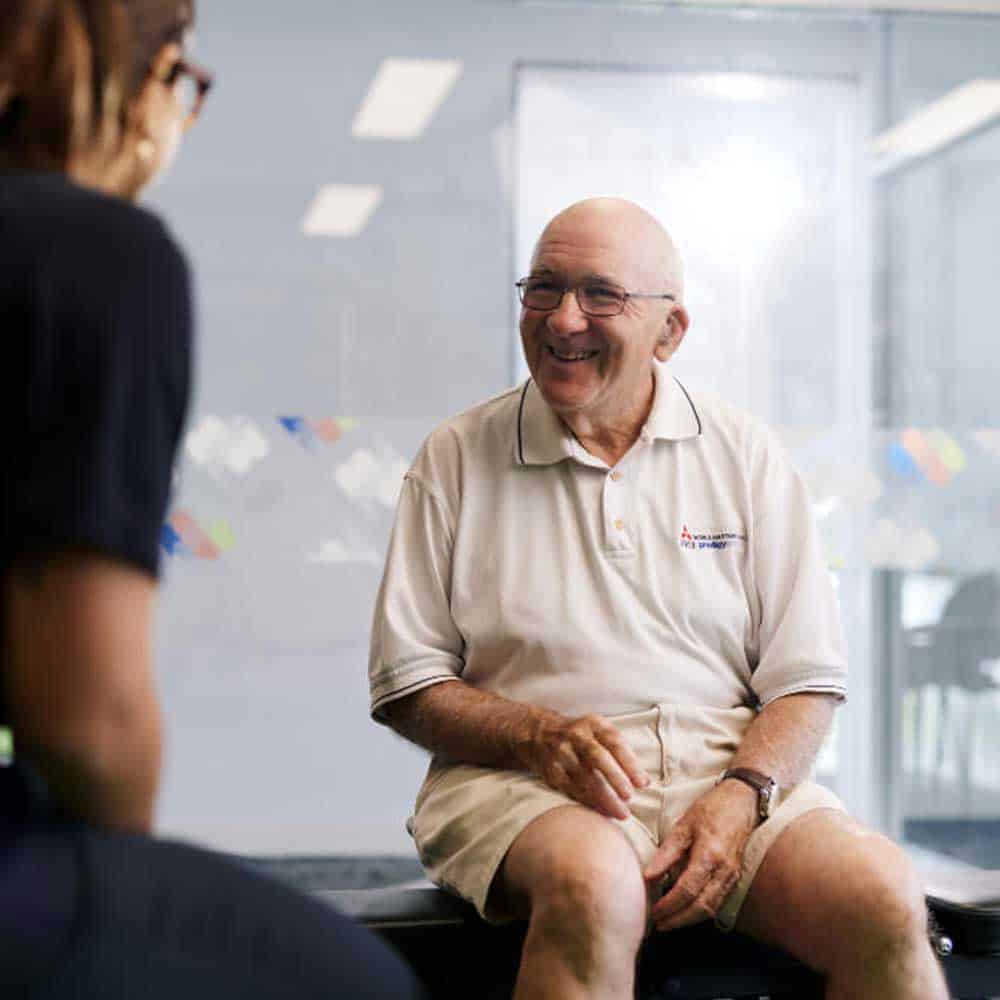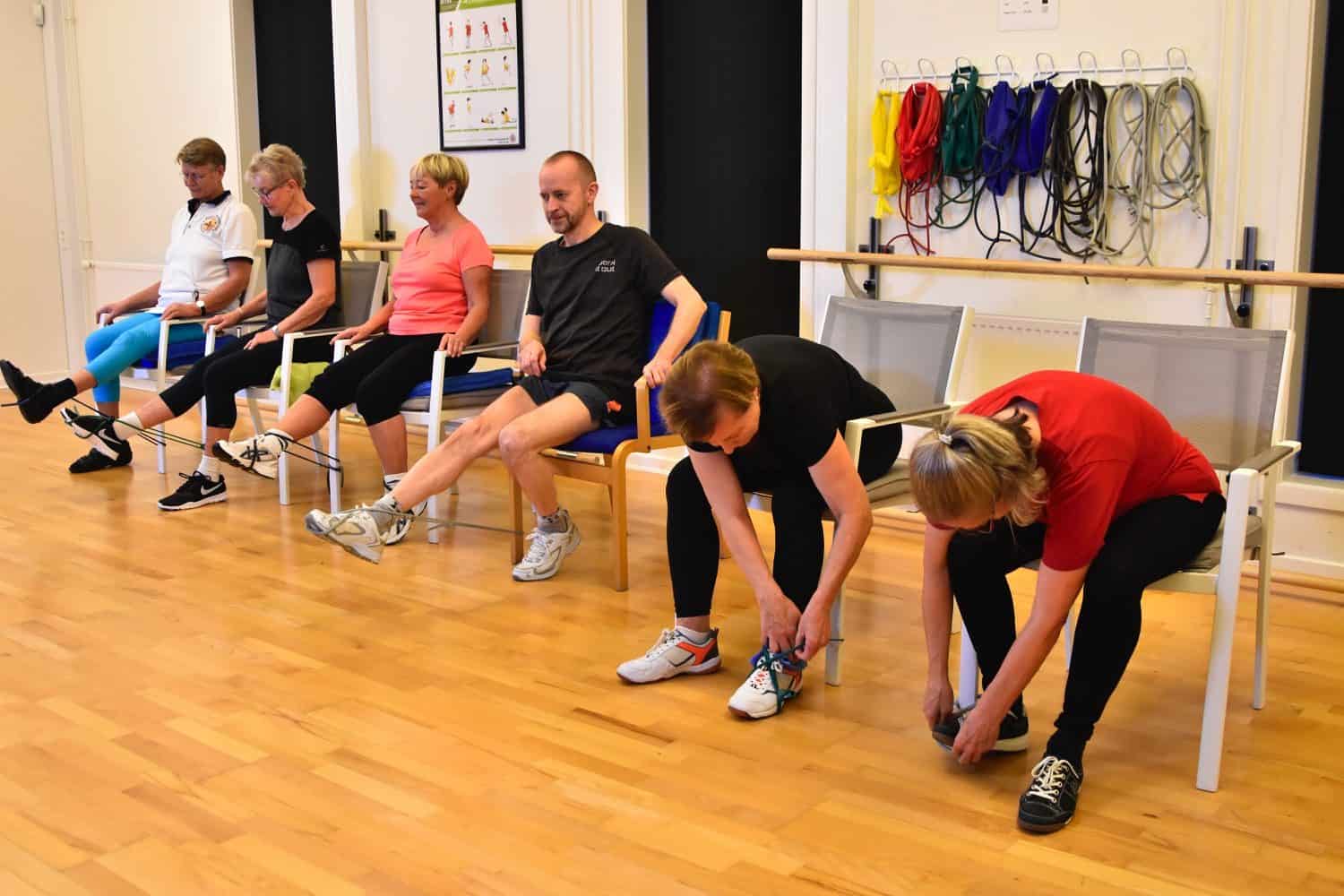What is Osteoarthritis and how does GLA:D™ help?
Osteoarthritis (OA) occurs when the cartilage that provides cushion at the end of bones in the joints gradually deteriorates. Cartilage is a firm, slippery tissue that enables nearly frictionless joint motion. Eventually, as the cartilage wears down, it effects the underlying bone & causes pain. OA has referred as wear & tear disease and besides the cartilage it also affects other tissues in the joints. It causes changes in the bones & connective tissue that holds the joint together & attached muscles that connect muscles & bones together. It may also cause inflammation in the joints.
We know pain and function are positive outcomes with exercise in those who are supervised and known to be compliant with the programs – that’s the critical part. We also know that if you do nothing other than lose 15% of your body weight that your pain and function also improve, so a combination of these things is logically particularly effective.
Osteoarthritis is the most common disease affecting people over 65 years. Evidence suggests that exercise therapy is the best line of therapy for osteoarthritis.




What is GLA:D™?
GLA:D™ Australia is an Exercise & Education training program that consists of:
- A first appointment with GLA:D certified physiotherapist explaining what the program is and collecting data on your current functional ability
- Then you will have two education sessions with your GLA:D certified physiotherapist – this teaches you about osteoarthritis, how the GLA:D™ exercises improve joint stability, and how to retain this improved joint stability outside of the program
- You will also receive one education session with our dietician – this teaches you about healthy eating + diet & nutrition that will help to
- Group neuromuscular exercise training sessions twice a week for six weeks to improve muscle control of the joint which leads to reduction in symptoms and improved quality of life
GLA:D™ program is run in private, public, and hospital physiotherapy clinics across Australia. The cost of the program can vary depending on location and size of the group. Please discuss this with your physiotherapist at Kinesio Physio. You do not need a referral from your doctor, however you may be eligible for a rebate from Medicare for some of the cost of the program, if deemed appropriate by your GP.
Please note: The program is not for rheumatological knee or hip pain.
The many benefits of the GLA:D™ program
The GLA:D™ exercise program was developed by Professor Ewa Roos and Dr Soren Skou of the University of Southern Denmark, and carried it out on almost 10,000 participants, and published the results in 2017. Among the findings were increased physical activity at 3 and 12 months, reduced sick leave at 12 months, and reduced pain medication at 3 months.
Frequently Asked Questions
As strength capacity improves, it allows you to target a more active general lifestyle in volume and / or intensity.
In addition to a reduced risk of flare ups during general activity, there is of course also a risk reduction in other chronic conditions that benefit from exercise such as cardiac, diabetes, and mental health issues.
One of the key strategies in ensuring low flare up risk and the appropriate level of prescription of the program, is pain monitoring.
The term ‘Safe and Acceptable Level’ of 0-5/10 pain score during and after the sessions, seems to resonate well, and this is part of the education.
The combination of any pain levels along with our observation of the quality of their exercise drives the specific level of exercise prescription we choose, and again helps minimise flare ups along the way to better ensure consistent gains.
We also do a face-to-face follow up at 3 months after registration, which is after patients have had a chance to continue the exercise program at home or at their gym. At this review we re-do the outcome measures.
GLA:D™ is a set 12 session program, ideally over 6 weeks. It is supervised, individually tailored, and is well tolerated.
Importantly, 12 sessions of training appears to be enough to make you very capable within the program, which follows onto a better chance for ongoing compliance either at home or the gym.
Outcome scores improved by over 30% at 3 months follow up, and this is consistent with the original large Danish study published in 2017.
and Coburg practices

